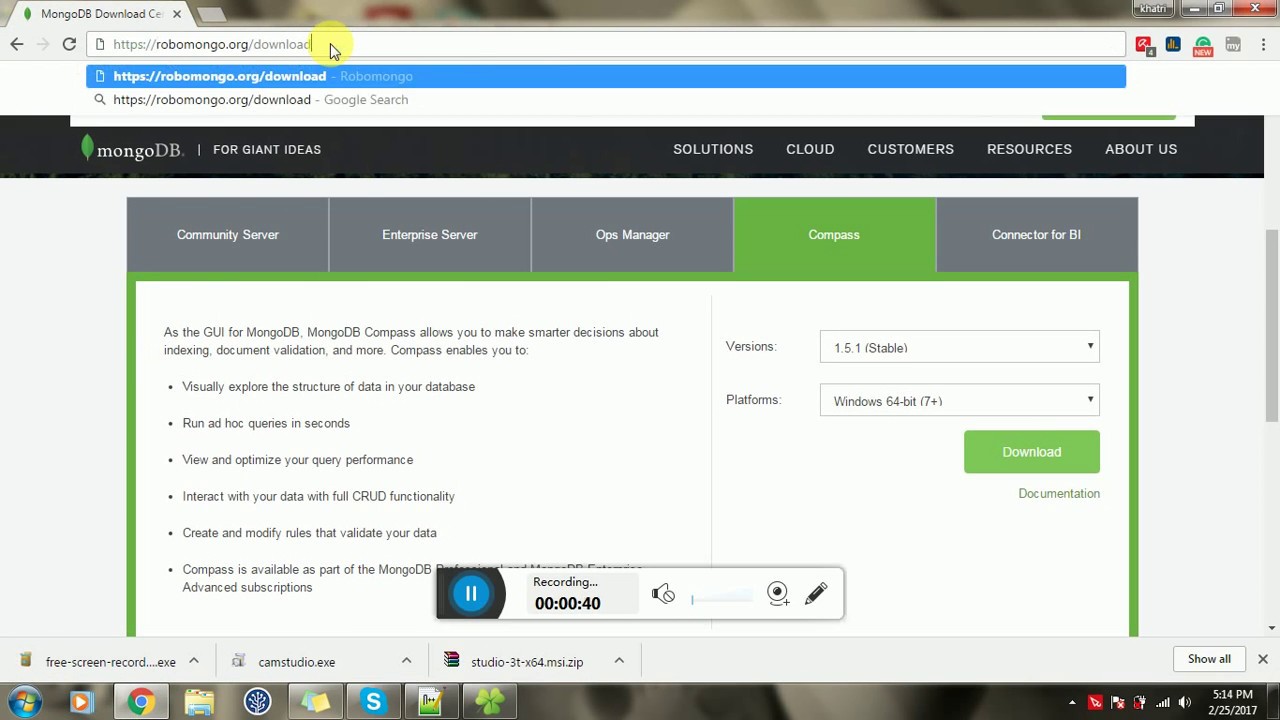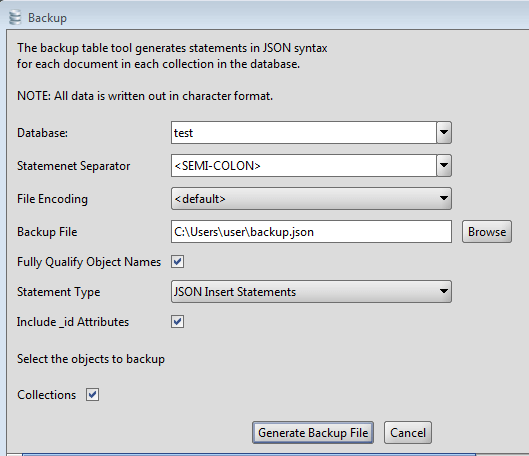

- #MONGODB FOR MAC OS X HOW TO#
- #MONGODB FOR MAC OS X INSTALL#
- #MONGODB FOR MAC OS X UPDATE#
- #MONGODB FOR MAC OS X DOWNLOAD#
- #MONGODB FOR MAC OS X WINDOWS#
I am sure this article helps you to install MongoDB on Mac OS using Homebrew.
#MONGODB FOR MAC OS X WINDOWS#
To Start a Mongo process first run the Mongo daemon, in one of your terminal windows run mongod.Sudo chown -R `id -un` /data/db Run MongoD and Mongo Make sure that the /data/db directory has the right permissions, run the chown command to give the right access:.Now create a Mongo data directory, This directory is where MongoDB stores database files, using the command:.After updating Homebrew install MongoDB by running the command: brew install mongodb.
#MONGODB FOR MAC OS X UPDATE#
#MONGODB FOR MAC OS X HOW TO#
How to install MongoDB on MAC OS X Install and update Homebrew – a package manager This is different than SQL databases, Relational databases, like PostgreSQL, MySQL and, where fields correspond to columns in a table and individual records correspond to rows. Values in documents can be looked up by their field’s key and can be easily added/updated anytime which makes Mongo extremely flexible. The document is a data structure composed of field and value pairs. In MongoDB, records are documents that behave a lot like JSON objects in JavaScript but use a variant called Binary JSON (BSON) that accommodates more data types. Its document-oriented data model makes it easier to split up data across multiple servers. # launchctl load /Library/LaunchDaemons/ is an open-source document database that belongs to a family of databases called NoSQL – not only SQL and provides high performance, high availability, and automatic scaling. Move it to /Library/LaunchDaemons/, and have Mac load it. If you have correctly followed the procedure above, you don't have to correct anything in the file. # mkdir /var/db/mongodbĭownload LaunchDaemon file from this gist (). append /Groups/_mongo GroupMembership _mongo If the same PrimaryGroupID as the user is already in use, change it # dscl. create /Groups/_mongo PrimaryGroupID 250 create /Users/_mongo UserShell /usr/bin/false You should change the UniqueID number depending on your environment # dscl. Then, pick up one that is less than 500 not to be listed on the login window, and follow the commands below. First of all, find an UniqueID that is not currently in use, using the following command. # ln -s /usr/local/mongodb/bin/mongotop /usr/local/bin/mongotop # ln -s /usr/local/mongodb/bin/mongostat /usr/local/bin/mongostat # ln -s /usr/local/mongodb/bin/mongosniff /usr/local/bin/mongosniff # ln -s /usr/local/mongodb/bin/mongos /usr/local/bin/mongos # ln -s /usr/local/mongodb/bin/mongorestore /usr/local/bin/mongorestore # ln -s /usr/local/mongodb/bin/mongoimport /usr/local/bin/mongoimport # ln -s /usr/local/mongodb/bin/mongofiles /usr/local/bin/mongofiles # ln -s /usr/local/mongodb/bin/mongoexport /usr/local/bin/mongoexport # ln -s /usr/local/mongodb/bin/mongodump /usr/local/bin/mongodump # ln -s /usr/local/mongodb/bin/mongod /usr/local/bin/mongod

# ln -s /usr/local/mongodb/bin/mongo /usr/local/bin/mongo # ln -s /usr/local/mongodb/bin/bsondump /usr/local/bin/bsondump Now make some symbolic links to the binaries, then you can access the binaries directly on your console like this: "% mongo". Then make a symbolic link to the folder as the name of shorter one so that you could access the folder easily. MongoDB is really simple, so that are the all the files that are needed to start up MongoDB. Then you could see a folder like this: "mongodb-osx-x86_64-2.0.0".

#MONGODB FOR MAC OS X DOWNLOAD#
Download the latest tar file, and expand it.The whole install procedure is like the following. How to install MongoDB 2.0 on Mac OS X Procedure


 0 kommentar(er)
0 kommentar(er)
